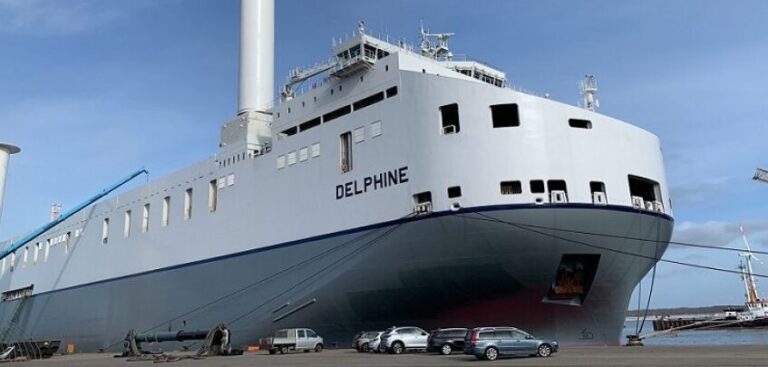The MV Delphine, a roll-on/roll-off vessel operated by CLdN, has been fitted with a rotor sail wind propulsion system consisting of two 35m x 5m sails.
Capable of installation on board new-build vessels or as a retrofit, the rotor sails are a modernized version of the Flettner rotor. The spinning cylinder, using the Magnus effect, harnesses wind power to propel the ship forward. Fully automated by design, the smart solution detects when the wind is powerful enough for the system to be activated to reduce fuel use and emissions. Additionally, the sails are tiltable, enabling the vessel to navigate under bridges or through other tight areas.
The MV Delphine benefits from a cargo capacity of over 8,000 lane meters and conducts operations between the UK, Ireland and Europe. It is claimed to be the most fuel-efficient short sea ro-ro in the world, outputting 28g of CO2 emitted per ton of cargo shipped per km travelled. With the rotor sails activated, the vessel will emit a reduced number of greenhouse gases due to an emission reduction saving of up to 10%.
Over the next few months, CLdN will work in collaboration with the Maritime Technology Division at Ghent University in Belgium to study the performance of the newly installed rotor sails.
“By investing in technologically advanced ships and terminals, CLdN enables its customers to improve their carbon footprint and support them in making their supply chains more efficient and robust,” said Gary Walker, chief operating officer at CLdN RoRo. “The rotor sails will maximize our fuel and emissions savings on the MV Delphine, and we will use this project to help determine how the technology could be deployed on the current CLdN fleet and our new-build vessels. Delphine’s redeployment to the fleet will help meet the current high levels of customer demand.”
The vessel is the first in the company’s fleet to be fitted with the system and is due to return to service on February 27, 2023.



